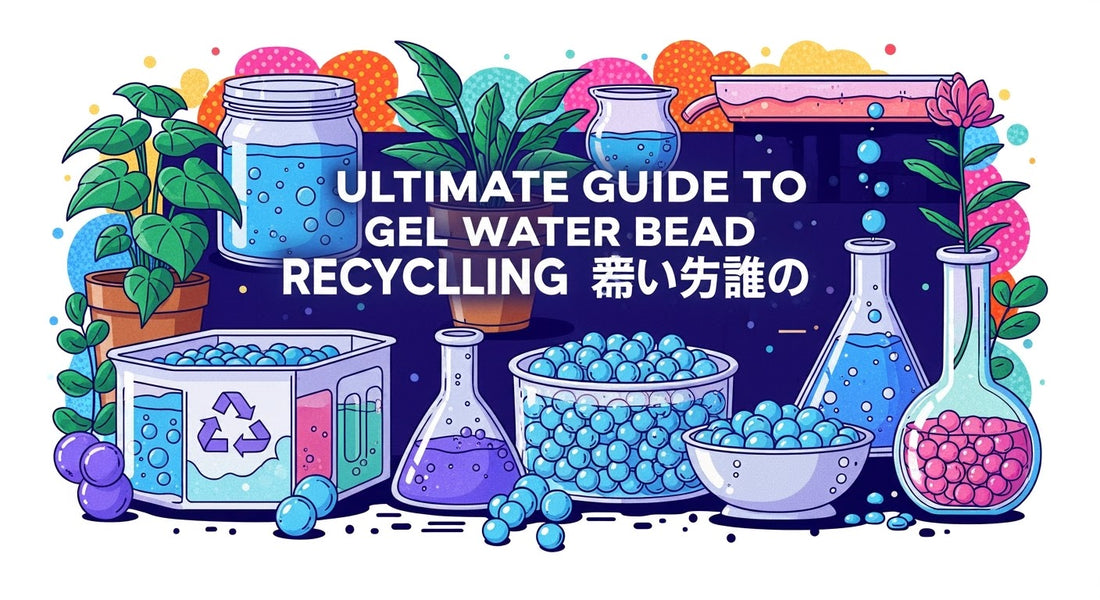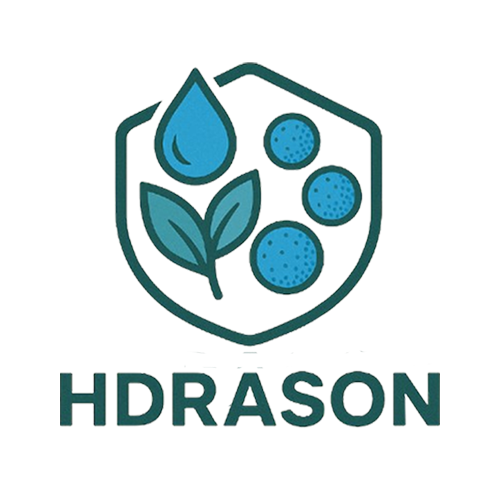
Hdrason Gel Blaster Water Beads Scientific Recycling Guide
Share
📑 Table of Contents
Introduction
Water beads, as an emerging form of recreation, have gained widespread popularity for their environmentally friendly and pollution-free properties. The water beads used are primarily made of superabsorbent polymer (SAP), a material with a strong ability to absorb water and expand to hundreds of times its own volume. While most water beads are advertised as biodegradable, proper disposal and recycling are crucial to minimizing environmental impact. This guide provides a scientifically sound and professional recycling solution for Hdrason water gun beads.
Simply sweeping them into the trash or flushing them down the drain is not a responsible option. While these superabsorbent polymers (SAP) are inherently non-toxic, large amounts of them can still pose an ecological burden. Today, Hdrason presents a scientific, comprehensive, and user-friendly guide to recycling water beads, allowing you to enjoy your hobby while fulfilling your environmental responsibility for the planet.
This scientific recycling guide answers these questions by exploring the chemistry, biodegradability, and eco-friendly practices of Hdrason® water beads.

1. The Life Cycle of Water Droplets and Materials Science
Hdrason® Gel Blaster water beads are made of superabsorbent polymers (SAPs), primarily polyacrylate-based materials. These tiny beads can absorb up to 100 times their weight in water, expanding into soft, squishy beads.
-
Biodegradability: Unlike plastic pellets, water beads gradually break down in soil under natural microbial activity, turning into water, carbon dioxide, and trace elements.
-
Non-toxic properties: Designed for safe gameplay, they don’t release harmful chemicals when disposed of properly.
-
Moisture release: As they dry, they shrink back to their original tiny form, reducing waste volume.
1.1 Ingredients and Characteristics
The core component of Hdrason water bullet beads is typically sodium polyacrylate, a non-toxic, biodegradable polymer.
- Water Absorption: The polymer's molecular chain contains a large number of hydrophilic groups, enabling it to rapidly absorb and lock in large amounts of water, forming a hydrogel.
- Biodegradability: In natural environments, such as soil, the beads are affected by microorganisms, light, and moisture, gradually breaking down into water, carbon dioxide, and a small amount of harmless polymer residue. This process typically takes several weeks to several months, depending on environmental conditions.
- Safety: Manufacturers generally ensure that the beads are harmless to humans and plants. However, this does not mean they can be discarded without care, especially if they are not fully decomposed. Large quantities of beads may pose a potential risk to small animals or sewer systems.
2.2 Factors Affecting Decomposition Rate
The decomposition rate of the beads is affected by the following key factors:
- Light: Ultraviolet light accelerates the breakage of polymer chains, thereby accelerating decomposition.
- Temperature: Higher temperatures promote microbial activity and accelerate the decomposition process.
- Humidity: Appropriate humidity is essential for microbial degradation.
- Microorganisms: The rich microbial communities in the soil are the primary force behind the decomposition of water droplets.

2. Scientific Recycling and Reuse Solutions
Below are several recycling options we've scientifically tested. You can choose one based on your needs.
Option 1: Home Gardening Recycling (Preferred)
This is the most environmentally friendly and valuable method. Dehydrated water bombs make excellent soil conditioners.
Steps:
- Collection and Drying: Collect used water bombs in a breathable mesh bag or lay them flat on newspaper. Let them dry naturally in a sunny, ventilated, and dry place. This process usually takes 2-3 days, and the water bombs will shrink back to their original size.
- Soil Mix: Mix the dried water bomb granules with potting soil at a ratio of 1:10.
- Use in Potted Plants: Use this for your potted plants. These polymers effectively increase the soil's water retention capacity, reducing watering frequency.
Note: This method is best suited for potted plants. It is not recommended to directly apply large quantities of water to natural ecosystems, as this may alter the local soil structure.
Option 2: Natural Degradation
If you do not want to recycle, ensuring safe degradation is paramount.
Steps:
- Saltwater Degradation: This is the most critical step. In highly concentrated salt water, the chemical potential of water is lower than that of the water bomb's interior, causing water to precipitate and rapidly dehydrate (a physical process based on the principle of osmotic pressure). Collect the discarded water bombs in a bucket, add a generous amount of table salt or salt water, and stir. You will see the water bombs shrink visibly.
- Disposal: Wait 24 hours, remove the shrunken water bombs, and dispose of them with regular dry trash. The remaining saltwater can be reused or simply discarded (salt has far less environmental impact than the entire water bomb).
Scientific Principle: Salt disrupts the water bomb's osmotic pressure balance, forcing it to release water. This is much faster and more complete than waiting for it to shrink naturally.
Option 3: Creative Reuse
Use your imagination to give the water bombs a second life.
- Sensory Toys: Making a sensory bin for children is an excellent tactile training material (always under adult supervision to prevent accidental ingestion).
- Ice Pack Alternative: Freezing water bombs can be used as emergency ice packs; they are soft and highly malleable.
- Keep flowers moist: Place colored water bombs at the bottom of a transparent vase to secure the branches and retain moisture, which is more economical than traditional gel beads.

3. Improper Disposal Methods and Potential Harms
-
❌ Not microplastics: Water beads are larger, degradable polymers, not the persistent microplastics polluting oceans.
-
❌ Not harmful to plants: In fact, when used sparingly, they can benefit plant hydration.
-
❌ Not suitable for waterways: Direct disposal in rivers, lakes, or sewers should be avoided to prevent temporary blockages.

4. Legal and Environmental Guidelines
Different regions have varying rules about biodegradable materials. Hdrason® ensures compliance by:
-
Following RoHS and REACH standards in material sourcing.
-
Providing clear disposal guidelines on packaging.
-
Supporting eco-conscious initiatives for sustainable gaming communities.
5. Hdrason’s Sustainability Commitment
At Hdrason®, we believe fun should never compromise the planet. That’s why we:
-
Use non-toxic, eco-conscious polymer formulations.
-
Encourage players to recycle and reuse beads wherever possible.
-
Invest in R&D to further improve the environmental footprint of gel water beads.
6. Conclusion
Recycling Hdrason® Gel Blaster water beads is less about traditional recycling bins and more about understanding their natural decomposition cycle. By reusing, composting, or soil integration, players can enjoy gel blaster games responsibly while minimizing environmental impact.
Hdrason® invites every gel blaster water beads enthusiast to join in building a sustainable, eco-friendly gaming culture—where fun meets responsibility.
Next article: Ultimate Gel Blaster Water Bead Growth Test
